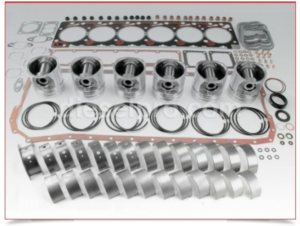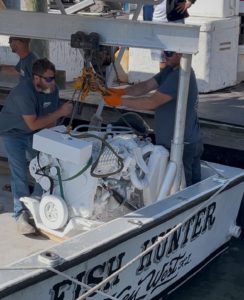April 14, 2025
Rebuilding the Cummins 6BT with Diesel Pro Parts – A Visit to Imperial Diesel Service
Inside the Shop: A Rebuilt Cummins 6BT from Imperial Diesel Service
The Cummins 6BT: Still a Legend
Why Mechanics Choose DieselPro.com for 6BT Rebuilds
Watch the Rebuild in Action
Over 40,000 Satisfied Customers Worldwide
Fast, Worldwide Shipping
Intuitive Online Ordering
Secure and Private
World-Class Customer Service
Where the Cummins 6BT Shines – Applications We Support
Marine Applications
Industrial Applications
Cummins 6BT Engine Specifications
Applications of the Cummins 6BT Engine
1. Marine Auxiliary and Generator Use
Marine Use Cases:
2. Power Generation Systems
Generator Applications:
3. Construction & Utility Equipment
Common Applications:
4. Agricultural Machinery
Agricultural Use Cases:
5. Oilfield and Heavy Utility Applications
Oilfield Uses:
6. Global Export and Repower Markets
Global Applications:
Key Advantages of the Cummins 6BT Engine
Conclusion
Additional Resources For The Cummins 6BT
Read More
April 10, 2025
Cummins 6CTA: Application Commercial Fishing Vessels
Introduction – Featuring Imperial Diesel Service, LLC Installation
Technical Overview of the Cummins 6CTA for Fishing Vessels
Key Specifications (Typical Marine Configurations)
Why the Cummins 6CTA is a Top Choice for Commercial Fishing
Common Fisheries Using the Cummins 6CTA
Bottom Fishing in the Gulf of America (formerly known as the Gulf of Mexico) & Florida Keys
Lobster Fisheries – Maine, Canada, New England, and Florida Keys
Latin America and Caribbean Fisheries
Crab Fisheries – Alaska, Pacific Northwest, Gulf of America
Shrimp Trawling – Gulf of America, South America, Southeast Asia
Tuna Longlining – Pacific, Indian Ocean
Scallop and Clam Dredging – North Atlantic
Gillnetting and Trawling – Coastal and Nearshore
Installation Considerations for Commercial Fishing Vessels
Maintenance and Longevity in Fishing Applications
Aftermarket Support and CPL Cross-Reference
FAQs – Cummins 6CTA in Commercial Fishing
Final Thoughts
Read More
April 9, 2025
Installing a Camshaft into a Cummins 6BT Engine
Understanding the Camshaft in the Cummins 6BT Engine
Preparation for Camshaft Installation – Cummins 6BT Engine
Removing the Old Camshaft – Cummins 6BT
Inspecting Components Before Installation – Cummins 6BT Engine
Installing the New Camshaft – Cummins 6BT
Setting Camshaft Timing – Cummins 6BT
Final Steps and Initial Startup – Cummins 6BT
Troubleshooting After Camshaft Installation – Cummins 6BT
Maintenance After Installation – Cummins 6BT
FAQ – Installing a Camshaft in a Cummins 6BT
Read More
April 9, 2025
The Role of the Crankshaft in a Cummins 6BT Engine
Diesel Pro Power Has 6BT Crankshafts In Stock — Ready to Ship
5 Common Reasons You May Need to Replace Your Cummins 6BT Crankshaft
When You’re Changing Your Crankshaft, You May Also Need the Following
Read More
April 2, 2025
Installing the Injectors on a Cummins 6CTA 8.3L Marine Engine
Expanded Guide Based on OEM Service Manual | For Cummins 6C, 6CT, & 6CTA
Overview
Tools and Supplies Required | For Cummins 6C, 6CT, & 6CTA
Step-by-Step Injector Installation Process | For Cummins 6C, 6CT, & 6CTA

1. Prepare the Work Area
2. Clean and Inspect the Injector Bores
3. Lubricate the Injector O-Rings
4. Install the Injector into the Bore
5. Install the Injector Hold-Down Clamp and Bolt
6. Connect the Fuel Supply Line and Leak-Off Tube
7. Reconnect Engine Harness (if electronic)
8. Valve Cover Reinstallation
9. Bleed the Fuel System
10. Post-Installation Leak Check and Idle Inspection
Tips from Marine Technicians | For Cummins 6C, 6CT, & 6CTA
Marine Environment Considerations | For Cummins 6C, 6CT, & 6CTA
Video Summary: What You’ll See | For Cummins 6C, 6CT, & 6CTA
Need Injectors for a Cummins 6CTA 8.3L?
Additional FAQ | For Cummins 6C, 6CT, & 6CTA
Read More
March 27, 2025
Cummins KTA19 Injector Kits & Components Catalog
Overview: The Role of Injectors in the KTA19 Fuel System
Injector Kits for Cummins KTA19 Engines
When Should KTA19 Injectors Be Replaced?
Importance of Using the Correct CPL-Compatible Injector
Tips for Injector Replacement and Installation
Additional Components Commonly Paired with Injector Replacement
Why Choose Diesel Pro Power for Your KTA19 Injector Needs?
Read More
Page 2 of 38«12345...102030...»Last »




 Free US Calls: 1-888-433-4735
Free US Calls: 1-888-433-4735 International: 305-545-5588
International: 305-545-5588





